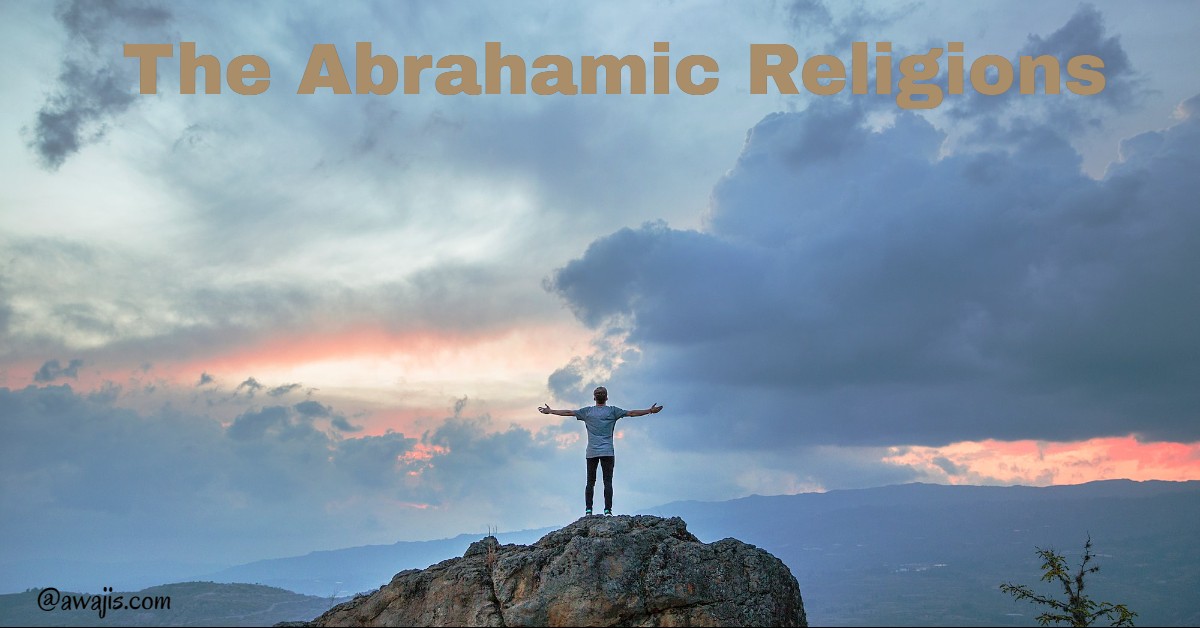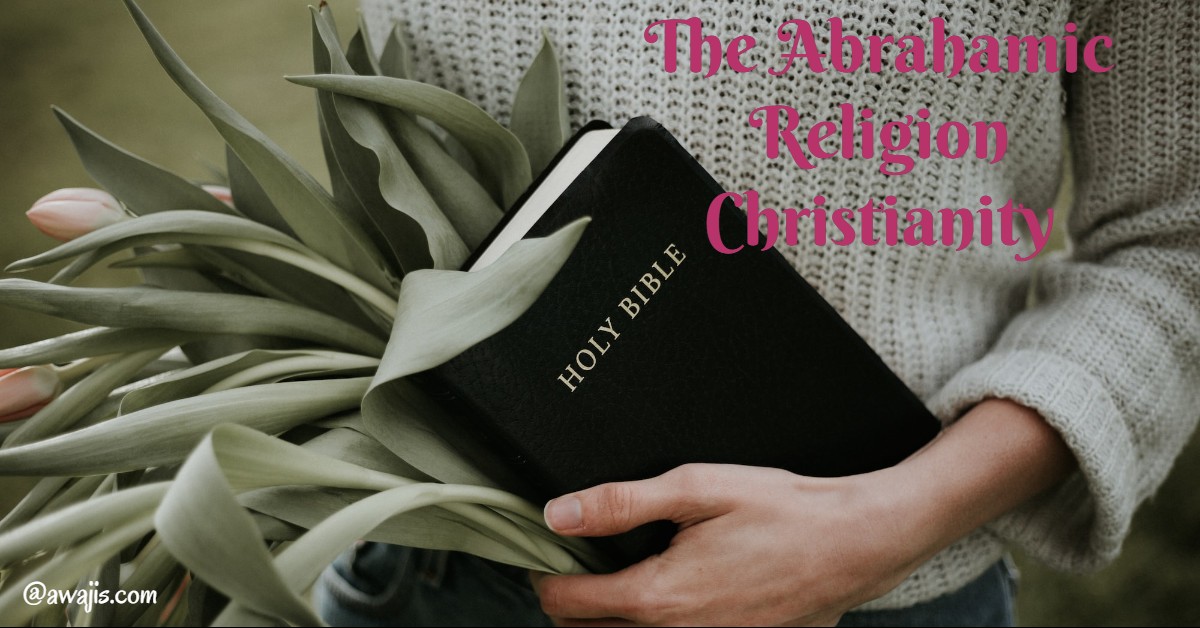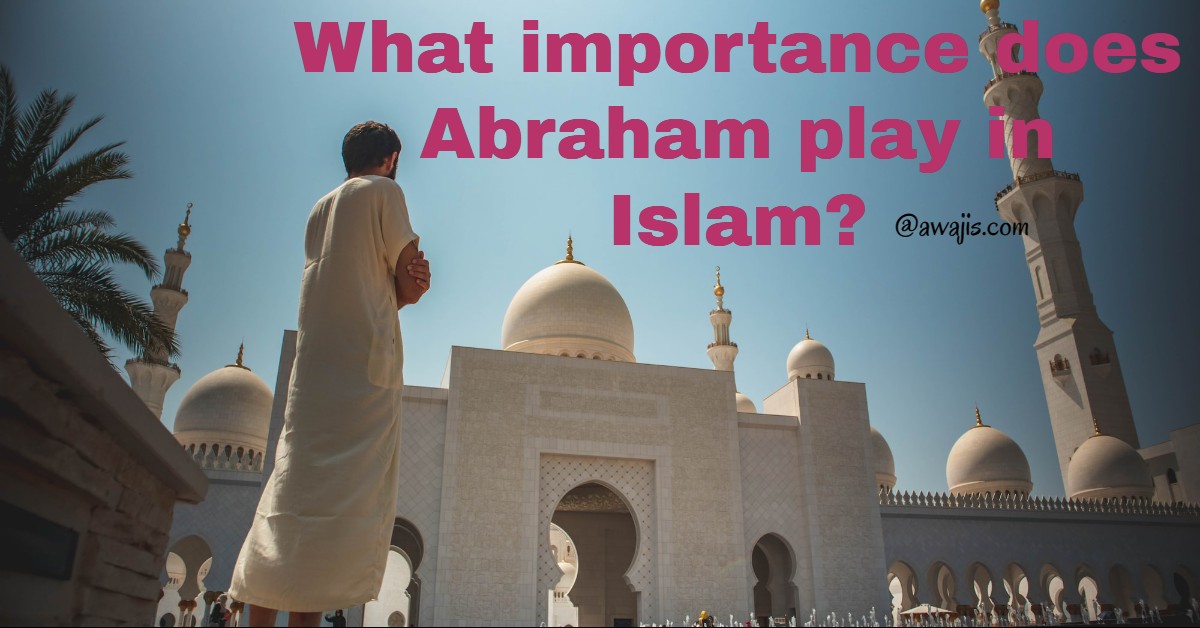The Abrahamic Religions
When most people think of the Abrahamic religions, they think of Judaism, Christianity, and Islam. There are other Abrahamic religions, such as the Baha’i Faith, Yezidi, Druze, Samaritan, and Rastafari, but this article will concentrate on the three most prominent.
The Abrahamic Religions

The term ‘Abrahamic’ refers to the central significance that the figure of Abraham plays in each of these faiths. Jews, Christians, and Muslims consult their sacred scriptures to learn about Abraham’s past and how it has been interpreted over the Hebrew Bible, which includes the Torah (the first five books or Pentateuch), the Prophets (Nevi’im), and the Writings, is the central scripture for Jews (Ketuvim). Genesis, the first book of the Bible, tells Abraham’s narrative. Abraham is mentioned numerous times in the Hebrew Bible as wean dost-biblical rabbinical texts interpreting the biblical story (Midrash).
For Christians, the Hebrew Bible is the Old Testament, the antecedent of the New Testament, which tells the story of Jesus Christ’s birth, ministry, death, and resurrection, as well as the lives and preaching of his early followers. The Letters of St. Paul are especially important for the Christian understanding of Abraham.
Muslims engage with the character of Abraham/Ibrhm in their holy book, the Qur’an, as well as Hadith, a collection of writings that transmit the Prophet Muhammad’s sayings and actions.
The Abrahamic Religion Judaism
Judaism, the earliest of the Abrahamic religions, produced no official monastic institutions, and its normative form, Rabbinic Judaism, is the least receptive to the monasticism of the Abrahamic religions. The Essenes of the Qumran community, the only monastic order in Jewish history, saw themselves as antagonistic to the ecclesiastical and marginal to the official Judaic complex. The lack of an enduring monastic quest, prompted by individual salvational expectations, could be attributed to Rabbinic Jewish theology’s poor eschatology (doctrine of the final things).
The Abrahamic Religion Islam
Although Islam was prohibited from practicing celibacy by the Prophet Muhammad, monastic institutions did emerge within non-Arabic forms of Islam. Several examples of Islam’s monastic communities, such as the Bektashi and the Sansiyyah (a conservative order created in the 19th century), are on the periphery. Ancillary rituals such as chanting and meditation on the secret or known names of God (dhikr) and other ecstasy-producing procedures were vital to these monastics, alongside the relationship between the individual teacher of esoteric wisdom (murshid) and his disciple (murid).
“The ‘way’ (‘arqah) referred to an option that would reach strictly devout Muslims. Throughout the Islamic Middle Ages, the Naqshbandiyyah order extended from its roots in Turkic-speaking regions of southwestern Central Asia to the rest of the Islamic world. It later returned the western parts of the Ottoman Empire (14th–20th centuries) from India. Several people are drawn to the organization due to its nonconformist, antinomian principles and the widespread use (or use allegations) of cannabis.
As with the late 20th century cultic movements (such as spiritualist, hippie, and similar groups) in the West, the ritualization of the esoteric, in contrast to that of the social and the civil in official Sunni orthopraxy, seemed to provide an outlet and alternative for a large number of devout but nonconformist Muslims. Deviant or surprising actions often bolstered the nonconformist movement, which stood opposed to social ideology. Sansiyyah brothers, for instance, made and used a wide range of scents in their daily grooming rituals. Rebellion, often expressed as itself through outlandish behavior, is common in societies where an antimonastic faith, like Islam, is the official religion.
The Abrahamic Religion Christianity

Researchers utilize Christian terms like monk and monastic to describe non-Christian organizations and activities. Christian monasticism shows an aggressive shift from contemplative to socially engaged.
The Benedictines, Cistercians, Carthusians, Carmelites, and several “minor” orders (in the Latin sense of humble or modest, not lower in a hierarchy or organization) all encourage meditation. Even though they are not “major,” the Dominicans should be because they prioritize academic continuity and evangelization over contemplation. On the other hand, the Jesuits (established by Ignatius of Loyola between 1534 and 1540) focus on others.
The order’s members are priests, and believing in teaching, social work, and leading an active life best exemplifies supererogatory devotion.
Christian
The Jesuits were part of a new order that started in the Roman Catholic Church around 1520. They were called “clerks regular.” The Theatines, also known as the “Clerks Regular of the Divine Providence,” were founded in 1524, and the Barnabites, also known as the “Clerks Regular of St. Paul,” was founded in 1530. The active orders comprise them and their many female counterparts, such as the Daughters of Charity and the Ursulines. In 1965, however, no active order was allowed to stay enclosed.
The Missionaries of Charity, which Mother Teresa started in the 20th century, gave up being alone and thinking about a life of service. Several academics feel that, given their focus on outreach, these groups can no longer be considered monastic.
Monasticism today
Monasticism in the West is hard to evaluate with the common belief that Western Christianity is in crisis. The number of people seeking to enter monasteries as retreatants is rising, while the number of people seeking to enter as postulants is not. Many Western monks are moving away from action and toward more solitary activities like spiritual mentoring, icon building, and writing contemplative literature. By utilizing the web, monks have spread the word about their communities in a way never before possible, with tens of thousands of sites covering every aspect of monastic life. Virtually every Christian monastery and religious order has a website these days.
Although some locations (such as India) and Christian orders are experiencing growth in vocations, overall vocations are declining worldwide. Men in certain orders choose not to become priests to spend more time in the cloister and less time on outside responsibilities. Most teachers at schools that were originally staffed by Benedictines and Dominicans are now laypeople. Orders in Europe and North America are particularly hard hit by the costs associated with caring for their aged members. Despite the growing interest of spiritual seekers in Western Christian monasticism, the movement is losing adherents.
Monasticism
Yet, monasticism is seeing something of a renaissance in the areas of the former Soviet Union. As a result, hundreds of monasteries have reopened for worship since 1989, and many are now home to young novices. The Eastern Orthodox Christian veneration of monastics as the personification of both pious and national tradition has contributed to a flourishing study of Russian, Ukrainian, and other Slavic monasticism, particularly by archaeologists. Nonetheless, the reputation of several Russian and Ukrainian monasteries is still tarnished by their ties to the Soviet secret police in the past.
Early 21st-century Theravadin countries like Sri Lanka, Myanmar, and Thailand are characterized by a pervasive monastic culture in which male Buddhist monks dominate and still dominate the common practice for young men of that age group to enter monasteries for several months to several years. Yet, in most of Asia, the orders of nuns have been suppressed (other than in Taiwan and Korea). Many Buddhist groups in Japan and South Korea are financed by tourists and those interested in the religion. Yet, in communist Asia, the persecution of the 20th century took such a high toll that monasticism there had not recovered by the turn of the 21st century.
Note
Before a modicum of tolerance was provided in China around the 1980s, thousands of monasteries had been shut down or allowed to decay. In Vietnam, monasteries were shut off from potential rites. Hundreds of monasteries were destroyed, thousands of monks were executed or imprisoned, and tens of thousands were exiled. Through the establishment of national institutions and the promotion of Christian-Buddhist dialogue in the late 20th and early 21st centuries, their migration injected tremendous life into Western Buddhism.
Monasticism has never been studied by people who aren’t monks or sought out by people who aren’t monks through pilgrimage and retreat. Seekers and academics are both drawn to the idea of a committed life—communal, ruled by rules, and covered in religion. Monasticism has never been studied by people who aren’t monks or sought out by people who aren’t monks through pilgrimage and retreat. Seekers and academics are both drawn to the idea of a committed life—communal, ruled by rules, and covered in religion. Assuming this trend continues for a long time, it significantly impacts financial and demographic health.
What does the Bible say about Abraham?
Let’s look at the book of Genesis to find the parts of Abraham’s life that Jews and Christians agree on. In Genesis 12:1-3, God tells Abraham, still called Abram, to leave his home country, family, and father’s house and go to a land God will show him. I will make you a big nation. I will bless you and make your name famous so that you can be a blessing to other people. And in you, all the world’s families will be blessed (NRVS).
Abraham bears a son with Sarah’s slave Hagar because Sarai (later Sarah) is unable to have children. The baby’s name is Ishmael. Abraham is instructed to circumcise all male offspring at eight days old (Genesis 17). On the same day, he learns that Sarah will also give birth to a son. Hello, I’m Isaac. Sarah and Hagar’s relationship deteriorates as their sons mature, so she convinces Abraham to abandon Hagar and Ishmael (Genesis 21).
As Hagar had Ishmael, God tells her that he, too, will become a powerful nation. Following this, God puts Abraham’s faith to the test by ordering the sacrifice of his son Isaac (Genesis 22). Just as Abraham is about to sacrifice Isaac on Mount Moriah, an angel appears and tells him to look at a ram that has become entangled in the underbrush instead. In place of Isaac, the ram is slaughtered.
How does Abraham feature in Judaism?
The Jewish religious ritual of Isaac’s sacrifice is known as the Akedah or the Binding of Isaac. Jewish martyrs during persecution called upon the Akedah as they gave their lives to honor God (Kiddush ha-Shem).
In the book of Genesis, Abraham is portrayed as a guy with complete faith in God and diligently obeys God’s laws. A tale told in the Midrash depicts Abraham as exemplifying this trait when he destroys the idols in his father’s house. His faith in his creator saves him from certain death when King Nimrod tosses him into a furnace.
Abraham is revered as the prototypical Jew in Hebrew mythology. He represents the ideal of the devout Jew who lives according to God’s laws. Jews have always considered themselves descended from Abraham via Isaac and Jacob. The Jewish people are called the Bnei Ya’akov/Israel, which refers to “the children of Jacob/Israel,” while God is called “the God of Abraham, Isaac, and Jacob” in Jewish prayer books. Israel was renamed Jacob in Genesis 32:29.
What importance does Abraham play in Islam?

Along with Judaism, Islam tells the story of Abraham destroying idols to make room for the worship of the One True God. Abraham asked his father and the people, “What is it thing you worship?” (Sura 37). To worship deities besides Allah is a lie; do you want to believe this? “So,” I asked, “what do you think the Lord of the Worlds is like?” … Then he turned around and swung his right fist at them. … He asked, “Do you worship what you have carved?” Yet Allah made you and what you’ve made! They advocated that he be “thrown into a roaring fire” and suggested that he be a “furnace.”
Similarly, in the same Surah, Abraham is shown a vision in which he is commanded to kill his son. Allah, like God in the Bible, changes the past. Abraham and his son were put through a grueling test, yet the Qur’an stresses that they came out on top.
What importance does Abraham play in Islam?
There’s no indication of which son was meant here, although most modern Muslims believe it was Ishmael/Isma’il. In the Muslim belief, the story of Hagar and Ishmael being cast out of the house is paralleled by Abraham bringing them to Mecca, where he and Ishmael eventually construct the Ka’bah, the focal point of the Hajj.
We learn that Abraham “was not a Jew nor yet a Christian, yet he was true in faith and bent his will to Allah’s (which is Islam), and he united not gods with Allah” (Surah 3.67–68) and that he is called “the companion of God” (Surah 4.124–125). Undeniably, the people who follow Abraham are the closest relatives among men, as are those who follow this Messenger [Muhammad] and the believers. Allah is the Defender of the Faithful. Islam means the mission to Allah,” was preached by Muhammad and named after Abraham.
Common ground between the Abrahamic Religions
Jewish, Christian, and Muslim Abrahamic stories exist. Traditions vary within and between. Understanding the turbulent history of Jews, Christians, and Muslims necessitates appreciating the various interpretations and how often they exclude each other. Throughout time, the interfaith discourse has improved.
German Karl-Josef Kuschel reimagined Abraham as a man who trusted God and did God’s will in all faiths. He thinks Abrahamic family members can find common ground. The Oxford Abrahamic Group discusses and contrasts Abraham, Moses, Jesus, and Muhammad, taught by Jews, Christians, and Muslims, to discover common ground for discourse. Abraham, revered in all three Abrahamic faiths for his faith in God, must be understood.
Read Also:
Why I Left the Seventh-Day Adventist Church (Research 2025)
Most Beautiful Twins in the World (2025 Report)